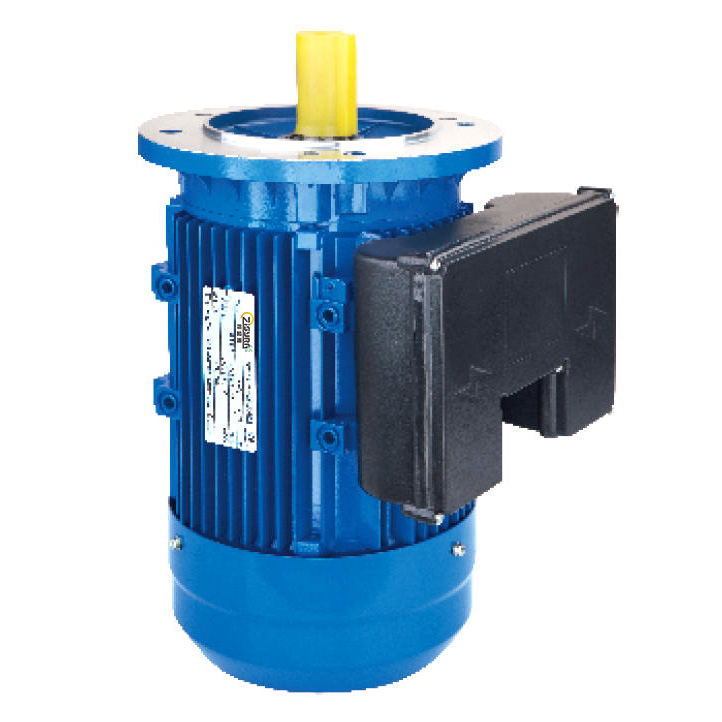What is the Difference Between an Induction Motor and a Synchronous Motor?
2025-09-12
Electric motors are the workhorses of modern industry, but choosing the right type is crucial for efficiency and performance. The fundamental difference between an induction motor (IM) and a synchronous motor (SM) lies in how their rotors interact with the stator's rotating magnetic field. An induction motor's rotor speed is always less than the synchronous speed of the magnetic field, which is why it's also called an "asynchronous" motor. Its operation relies on electromagnetic induction to create current in the rotor. In contrast, a synchronous motor's rotor rotates at exactly the same speed as the stator's magnetic field. It locks into sync by using either permanent magnets or an external DC excitation current applied to its rotor windings.
Key Operational Differences
The core distinction creates a cascade of practical implications:
1. Speed: An Induction Motor's speed decreases as the load increases. A Synchronous Motor's speed remains constant from no-load to full-load, provided the frequency is stable.
2. Starting Torque: A standard induction motor produces high starting torque. A synchronous motor has no inherent starting torque and requires an auxiliary method (like an induction start winding or a variable frequency drive) to bring it up to synchronous speed.
3. Power Factor: Induction motors typically operate at a lagging power factor, which often requires corrective capacitors. Synchronous motors can be operated at a unity or leading power factor, making them excellent for power factor correction in large industrial plants.
4. Efficiency: Synchronous motors are generally more efficient than their induction counterparts, especially in larger sizes, due to reduced rotor losses.
5. Complexity & Cost: The simple, rugged construction of the squirrel-cage induction motor makes it inexpensive and low-maintenance. The need for a DC exciter and starting mechanism makes synchronous motors more complex and costly.
Our Product Specifications at a Glance
At our factory, we engineer both motor types to meet precise application demands. Here are the key parameters for our standard Zisyra line of industrial motors.
Comparison Table: Zisyra IM vs. SM Series
| Feature | Induction Motor (IM) | Synchronous Motor (SM) |
| Typical Efficiency | High (IE3/IE4) | Very High (IE4/IE5) |
| Speed Regulation | Slips with load | Constant, independent of load |
| Power Factor | Lagging (requires correction) | Adjustable (can be leading) |
| Initial Cost | Lower | Higher |
| Maintenance | Lower (robust construction) | Higher (slip rings/brushes may need service) |
| Best Applications | Pumps, fans, conveyors, compressors | Large compressors, pumps, generators, precision tools |
Frequently Asked Questions (FAQs)
Q1: Which motor is more efficient, induction or synchronous?
Synchronous motors are generally more efficient than induction motors, particularly in larger horsepower ratings. This is because losses in the rotor are eliminated once it is synchronized with the rotating magnetic field. For applications running continuously, the higher initial cost of a synchronous motor can be justified by significant energy savings over its operational life. Our Zisyra SM series is designed for this exact scenario, offering IE4 and IE5 efficiency levels.
Q2: Can a synchronous motor be used for power factor correction?
Yes, this is a major advantage of synchronous motors. When the rotor's DC field excitation is over-excited, the motor operates at a leading power factor and can supply reactive power (kVAR) to the electrical grid. This capability allows them to correct the lagging power factor caused by induction motors and other inductive loads in a facility, potentially eliminating the need for separate capacitor banks and avoiding utility power factor penalties.
Find the Right Motor Solution with Zisyra
Selecting between an induction motor and a synchronous motor depends on your specific needs for cost, speed control, efficiency, and power quality. Our engineering team at Suzhou Zishengya Hardware Electrical Machinery Co., Ltd. is dedicated to providing the optimal solution for your application. We pride ourselves on the durability and performance of our products, which are manufactured to the highest international standards. For expert guidance and to explore our full range of reliable induction motor and synchronous motor solutions, contact us today. Let our experience power your success.
